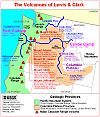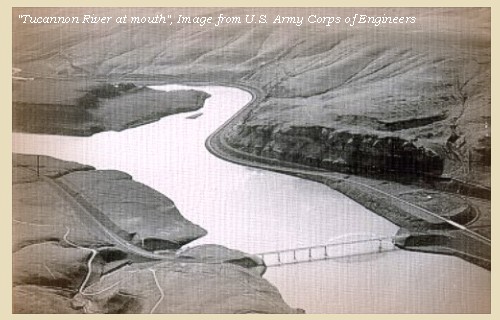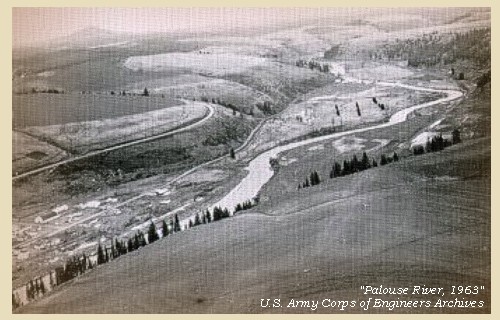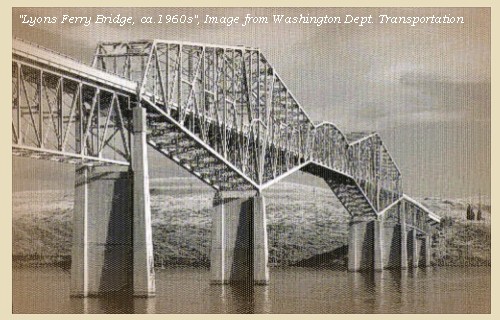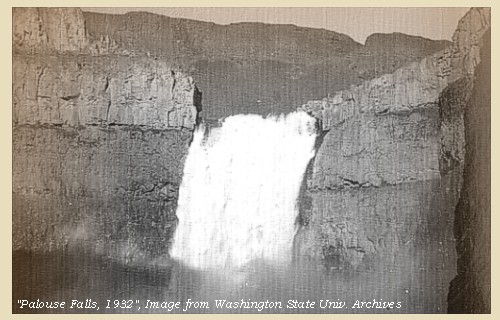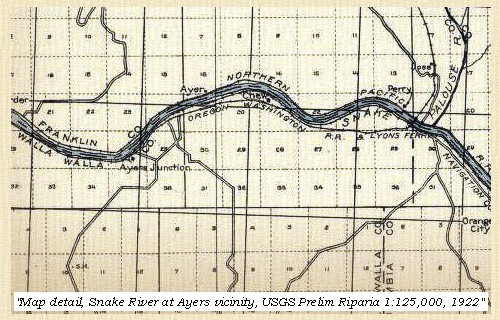The Volcanoes of
Lewis and Clark
Lewis and Clark
|
October 13, 1805 On the Snake River - Texas Rapids to Ayers Junction |
|
Home
The Volcanoes of Lewis and Clark Map of the Journey Volcanoes, Basalt Plateaus, Major Rivers, etc. The Volcanoes Mount Adams, Mount Hood, Mount Jefferson, Mount Rainier, and Mount St. Helens CALENDAR of the Journey October 1805 to June 1806 Along the Journey Pacific Northwest Maps - Columbia River, Volcanoes, Flood Basalts, Missoula Floods, Geology, etc. The Corps of Discovery The Journey of Lewis and Clark About the Reference Materials The Journals, Biddle/Allen, DeVoto, Gass, Moulton, Topo Maps, and others USGS Lewis and Clark Links Links to USGS Websites highlighting the Lewis and Clark Journey Resources Publications Referenced and Websites Visited |
PREVIOUS
October 12 On the Snake, Almota Creek to Texas Rapids |
October 13
On the Snake, Texas Rapids to Ayers Junction Tucannon River, Palouse River and Palouse Rapids, Lyon's Ferry State Park, Palouse Falls and Palouse Falls State Park, False Palouse Rapids, Ayers Junction (Washington) |
CONTINUE
October 14-15 On the Snake, Ayers Junction to Fish Hook Rapids |
|
To the Pacific - October 1805
On the Snake - Texas Rapids to Ayers Junction |
| Lewis and Clark's camp of October 12, 1805, was at the mouth of Alkali Flat Creek, near the town of Riparia, Washington, just downstream of Little Goose Dam. The campsite was at the head of Texas Rapids which is now below Lake West, the backwater of Lower Monumental Dam. |
| Sunday, October 13, 1805 |
| The morning was windy and dark, and the which began before daylight, continued till near twelve o'clock. Having viewed very accurately the whole of this rapid [Texas Rapids] we set out, the Indians going on before us to pilot the canoes. We found it, as had been reported, a very dangerous rapid, about two miles in length, and strewed with rocks in every direction, so as to require great dexterity to avoid running against them. We however passed through the channel, which is towards the left, and about the centre of the rapid, without meeting with any accident. Two miles below it we had another bad rapid [???], a mile beyond which is a large creek in a bend to the left. This we called Kimooenim creek. [Tucannon River. The Tucannon merges with the Snake downstream of Starbuck, Washington. Entry of October 16 uses "Kimooenim" to represent the Snake.] |
| "... The country continues much the same, all high dray prairie. One handsome creek comes in on the south side ..." [Gass, October 13, 1805] |
| "... towards evening we passed through a place in the River where it was all confined in a narrow channel of about 15 yards wide for about 2 miles and ran like a mill race ... passed a creek which came in on the Lard. Side this afternoon the current Swift. ..." [Ordway, October 13, 1805] |
| On leaving it the river soon became crowded with rough black rocks, till at the distance of a mile it forms a rapid [Palouse Rapids] which continues for four miles, and during the latter part of it for a mile and a half, the whole river is compressed into a narrow channel, not more than twenty-five yards wide. The water happened to be low as we passed, but during the high waters, the navigation must be very difficult. Immediately at the end of this rapid [Palouse Rapids], is a large stream in a bend to the right, which we called Drewyer's river [Palouse River], after George Drewyer one of the party. ...... |
| This area today is the location of Lyons Ferry State Park, on the Palouse River at it's confluence with the Snake River. |
| Located within Lyons Ferry State Park is spectacular Palouse Falls State Park, with it's 198-foot waterfall cascading over basalt cliffs. |
| We saw only two Indians who had visited the narrows, but we were overtaken by two others, who accompanied us on horseback down the river, informing us that they meant to proceed by land down to the great river. [Columbia River] Nine and a half miles below Drewyer's river [Palouse River], we passed another rapid [False Palouse Rapids], |
| and three and a half miles farther reached some high cliffs in a bend to the left. Here after passing the timbers of a house, which were preserved on forks, we encamped on the right side [across from Ayers Junction], near a collection of graves, such as we had seen above. The country was still an open plain without timber, and our day's journey had no variety, except the fishing houses which are scattered near the situations convenient for fishing, but are now empty. Our two Indian companions spent the night with us. |
| "... a Lard. bend high Clifts the parts of an Indian house Scaffoled up on the Lard Sd. opposit a Picketed grave yard we Came to on the Stard. Side & Camped. ..." [Clark, October 13, 1805, first draft] |
| "... at dusk came to on the Std. Side & Encamped. ... The Countery Thro' which we passed to day is Simlar to that of yesterday open plain no timber ..." [Clark, October 13, 1805] |
| "... the barrons and plains continue as usal ..." [Ordway, October 13, 1805] |
|
|
|
The Camp - October 13, 1805:
Lewis and Clark's camp of October 13, 1805, is located approximately 13 miles downstream of the Palouse River, on the north bank of the Snake River, 6 miles downstream of present-day Ayers Junction, Washington. |
| Home | Previous | Continue |
If you have questions or comments please contact: GS-CVO-WEB@usgs.gov
June/July 2004, Lyn Topinka
The Volcanoes of Lewis and Clark Home Page | CVO Home Page

